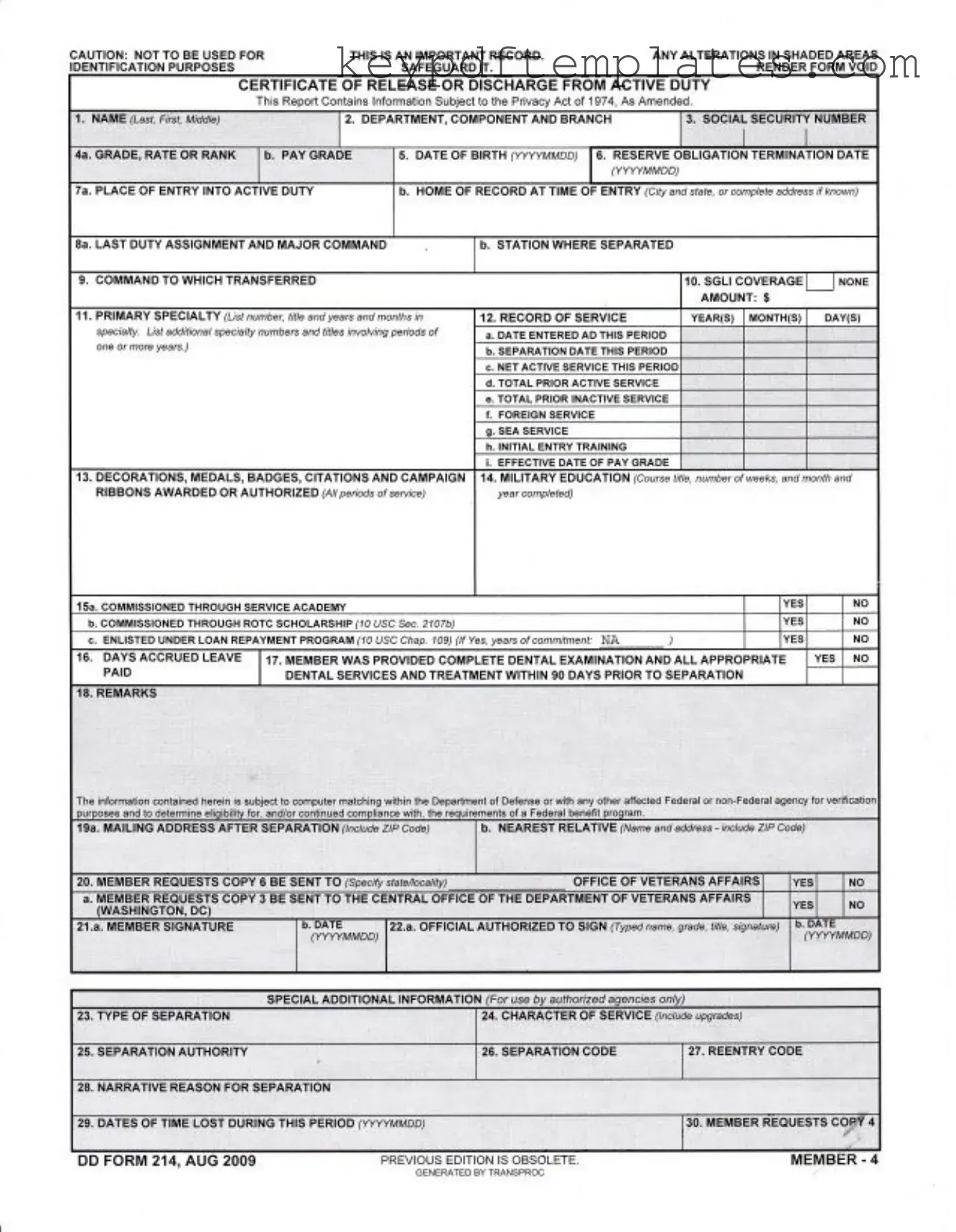Get Dd 214 Form
The DD Form 214, officially known as the Certificate of Release or Discharge from Active Duty, serves as a vital record for service members transitioning from military to civilian life. This form documents essential details about a service member's military history, including their service dates, character of service, and any awards received. Understanding the significance of the DD Form 214 is crucial for veterans seeking benefits and recognition after their service.
Modify Document Online
